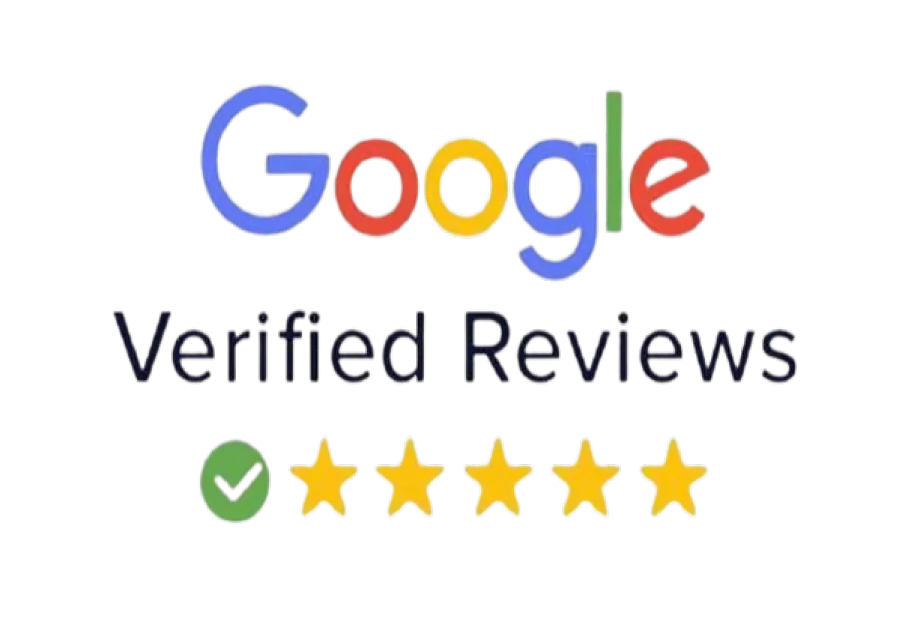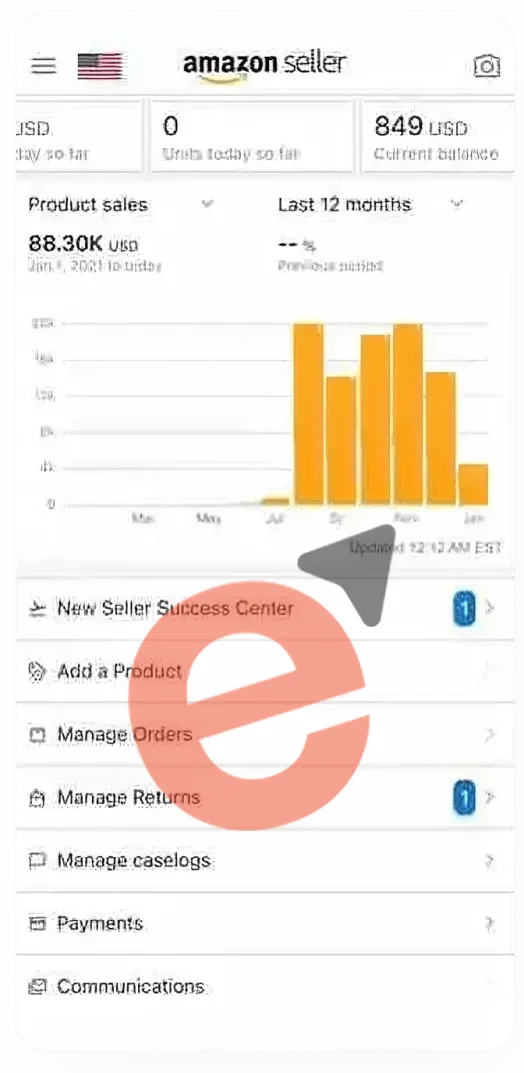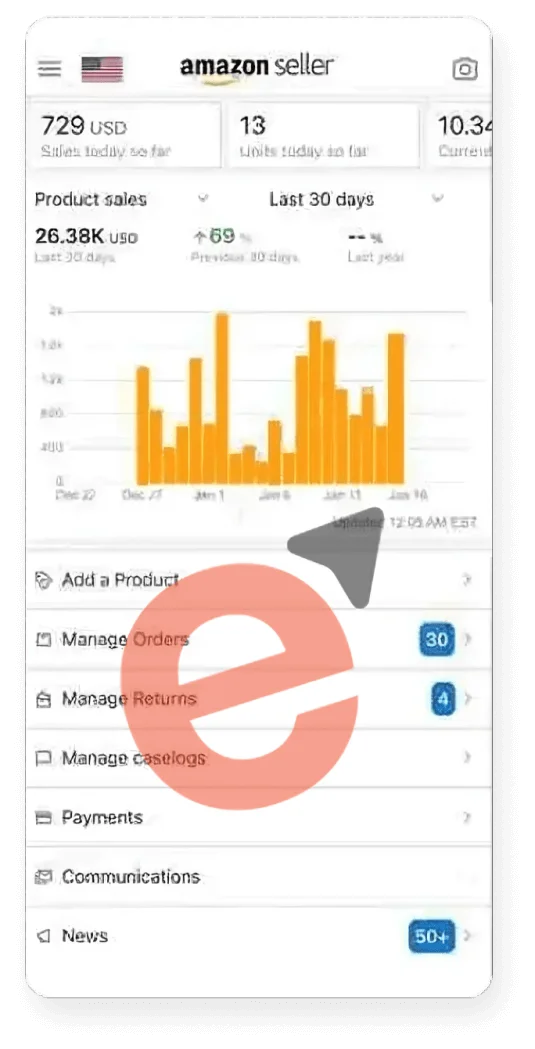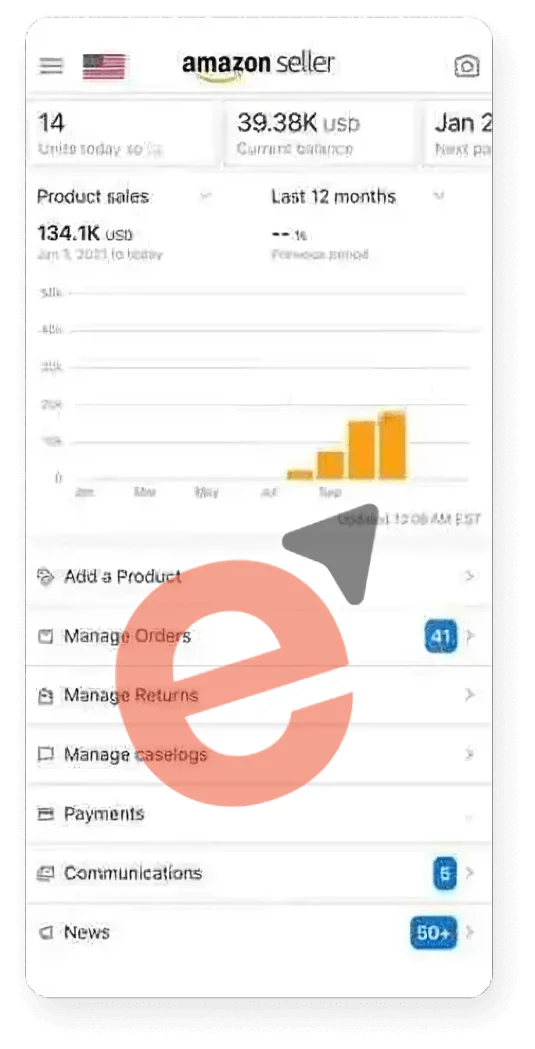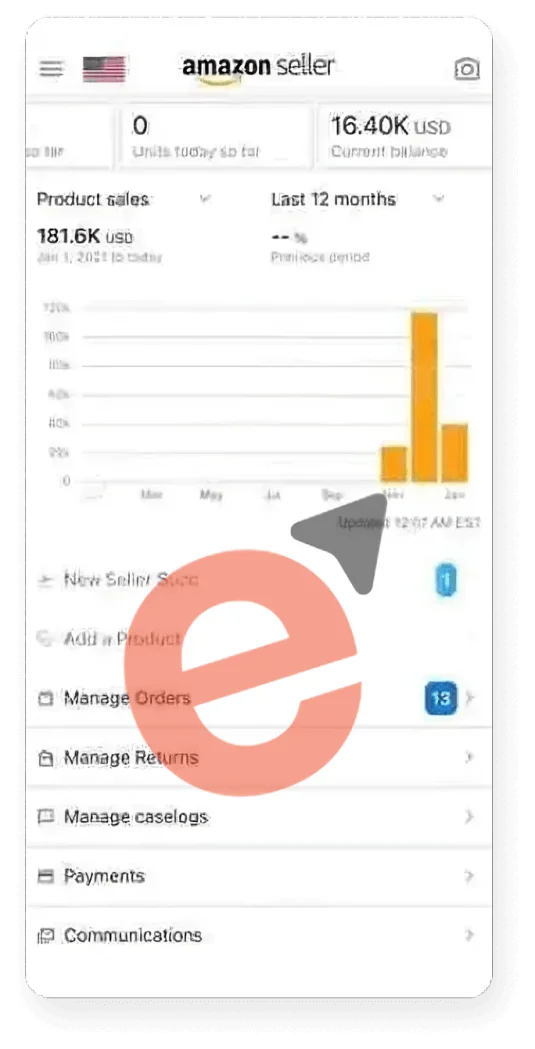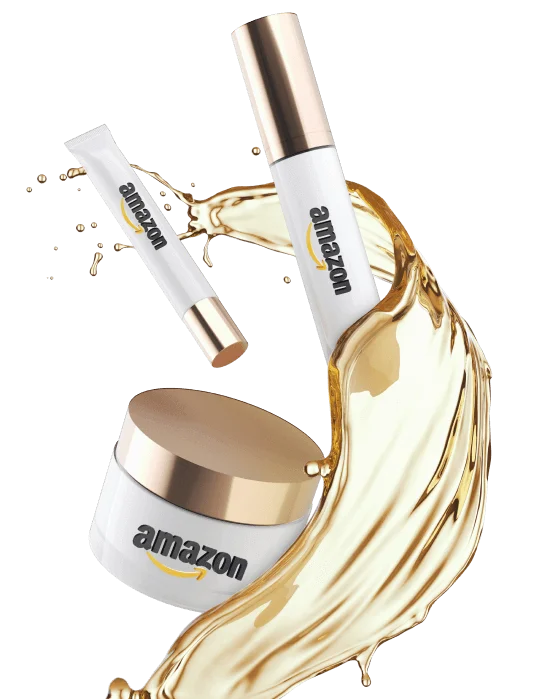What is Shopify Dropshipping?
Let us start with the basics. Shopify Dropshipping
is a business concept that allows you to sell things straight to clients without ever storing
inventory. Instead, when a consumer purchases from your business, you purchase the item from a
third-party provider, who distributes it straight to them. Your role includes creating and
managing the Shopify store, marketing the items, and providing customer care.
Unlike traditional eCommerce, which requires you to keep things at a warehouse or home,
dropshipping eliminates this necessity. This makes it an appealing alternative for businesses
wishing to get started with a little initial cost.
The benefit of dropshipping is that you do not have to spend money on things that have yet to
sell. You only pay for the merchandise when a consumer has purchased it in your store. This
considerably reduces financial risk, allowing you to try various items and niches without a
large expense.
Dropshipping allows you to get started faster than Shopify Private Label, which requires you to
build your own branded items. However, it does provide its own set of issues, including reduced
profit margins and less control over product quality.
Steps to Set Up Shopify Dropshipping
Now that you understand what Shopify Dropshipping is let us go over the step-by-step procedure for getting your business up and operating. These instructions will help you build a fully working Shopify store and get ready for your first sale.
Step 1: Choose Your Niche
Before anything else, you must select what type of things you wish to offer. This is known as
picking a niche. The more targeted your specialty, the better. Instead of offering generic
apparel, you may specialize in eco-friendly exercise wear or baby garments for parents who value
organic products.
When choosing a niche, establish a balance between things you are enthusiastic about and those
with a market need. To investigate popular items and genres, utilize resources such as Google
Trends, Oberlo, and Amazon's best-seller lists.
Remember that competition in dropshipping is tough, so attempt to choose a niche that is
manageable. At the same time, be sure there is enough demand to support your firm. Take some
time to brainstorm and investigate before proceeding to the next phase.
Step 2: Sign Up for Shopify
Once you have established your specialization, the following step is to sign up for Shopify.
Shopify is one of the most popular dropshipping platforms, and for good reason. It is simple to
use, versatile, and includes a variety of features to help you run your dropshipping business.
Visit Shopify's website and register for a 14-day free trial. This allows you to experiment with
the platform and establish your business before incurring any costs. Once you have signed up,
Shopify will lead you through the basic steps of starting your online store, such as choosing a
name and uploading your first product.
Step 3: Install a Dropshipping App
Now comes the magic of Shopify dropshipping: create a dropshipping app. The most common choices
are Oberlo, Spocket, and DSers. These applications interface with Shopify and allow you to
import items directly from suppliers into your store.
Oberlo, for example, links you to AliExpress vendors, whereas Spocket sells items from local
suppliers (mostly in the United States and Europe). Choose the finest app for your needs and
install it from the Shopify App Store.
Once installed, you can easily browse a variety of items and add them to your Shopify store with
a single click. You will also be able to determine your own rates, which is essential for
calculating your profit margin.
Step 4: Customize Your Store
Before starting, you'll want to personalize your business. Shopify has a number of themes (both
free and premium) that you can use to change the appearance and feel of your website. You may
customize your store's colors, fonts, and layout to reflect your brand.
At this point, be sure you write appealing product descriptions and include high-quality
photographs. Even if you're dropshipping and don't have the items in stock, you can still make
your business appear professional and trustworthy. An excellent product description should
include specific advantages, precise information, and call-to-action language.
Don't overlook key sections like About Us, Shipping Information, and Refund Policy. These sites
establish confidence and credibility, which are critical for converting visitors into buyers.
Shopify Dropshipping Stores vs. Shopify Private Label
As you’re setting up your dropshipping store, you might wonder: how does this compare to Shopify
Private Label?
Let’s break down the key differences.
Ownership and Branding
With Shopify Private
Label, you can create and sell your own branded items. This allows you
complete control over your product's design, packaging, and entire consumer experience. You get
to create a brand from the beginning, which may result in increased brand loyalty and profit
margins over time.
In contrast, Shopify Dropshipping Stores offer third-party items, which means you have no
control over the branding or production. You are simply retailing someone else's items. While
this helps you to get started sooner, it reduces your competitive advantage.
Profit Margins
Private Label has larger profit margins since you source items directly from manufacturers and
add your brand. The increased value of branding enables you to charge a premium.
Shopify Dropshipping, however, comes with lower profit margins. Because you're buying things
from a supplier at a fixed price and then reselling them, you only have a little space to raise
your prices. Nonetheless, dropshipping remains a feasible alternative because of its low initial
expenses and scalability.
Time to Launch
Shopify Dropshipping requires less time to launch. You do not have to wait for product
development or manufacture. In only a few hours, you may have things displayed on your store and
ready to sell.
Private Label, on the other hand, takes longer to build. You will need to work with suppliers,
create products, and wait for manufacture. However, establishing a market-leading brand may
result in a long-term return on investment of time and money.
Launch and Market Your Shopify Dropshipping Store
Once the business is established, it's time to market and promote your products. This is when the real fun begins! You will need to drive traffic to your Shopify store and convert visitors into buyers.
Step 1: Create a Marketing Plan
Before you debut, create a marketing strategy. There are various ways to promote Shopify
Dropshipping Stores, including social media, email marketing, influencer collaborations, and
paid advertising. The goal is to determine the marketing tactics that are most appropriate for
your target demographic and specialization.
If you offer trendy fashion items, Instagram or TikTok are wonderful locations to start. Google
Ads and Pinterest are good options for more niche companies. The aim is to meet potential
clients where they are.
Step 2: Leverage Social Media
Social media marketing is critical for every Shopify dropshipping business. Platforms like
Instagram, Facebook, and TikTok enable you to reach a large audience at a cheap marketing cost.
You may get your products in front of potential purchasers by developing engaging content,
running targeted ads, or working with influencers.
One advantage of social media marketing is that you may build a community around your business.
Respond to comments, engage with followers, and create shareable content to get customers
talking about your business.
Step 3: Use Paid Advertising
If you want to develop quickly, consider advertising sponsored adverts on platforms such as
Facebook, Google, and Instagram. Paid advertising may provide targeted traffic to your store,
helping you to close your first sales faster. Begin with a tiny budget, try several
advertisements, and then optimize depending on the outcomes.
Remember that sponsored advertisements might be difficult to understand at first, so don't give
up if you don't see fast results. Continue trying and improving your strategy until you discover
what works best for your shop.
Final Thoughts on Shopify Dropshipping
Shopify Dropshipping is an amazing option to launch an eCommerce business with no risk. You don't
have to worry about inventory, and Shopify makes it simple to create a store that is ready to
sell in just a few days. However, success in dropshipping demands meticulous planning, product
research, and constant marketing efforts.
You can run a lucrative dropshipping company on Shopify by picking the correct niche, dependable
suppliers and optimizing your store for conversions. And if you're ready to take it a step
further, Shopify Private Label is an option for creating a more customized and successful brand
in the future.
Fulfilled by Success is here to support you every
step of the way. From setting up your Shopify store to developing a winning marketing campaign,
we provide experienced guidance and data-driven growth strategies to help your business survive
in the competitive world of eCommerce.
Success Stories from Our Clients

We used Fulfilled By Success for FBA and account reinstatement, and they did a great job each time. They know the platform very well.

Before partnering with Fulfilled by Success, my Amazon store was just breaking even. But their wholesale FBA strategy really transformed my business and boosted my profits way more than I ever imagined possible.

Thanks to the one-month virtual assistant service from Fulfilled by Success, we experienced a boost in our operations and gained valuable support that made a real difference

We’ve used Fulfilled by Success for everything from Amazon FBA to private labeling, and honestly, every service went above and beyond what we expected. The team was super professional, easy to work with, and really cared about helping us grow. They definitely live up to their name—I highly recommend them

The most reputable company to collaborate with, offering exceptional Amazon services for my store. Highly recommended! I will definitely use you guys again in future.
Your Amazon FBA Questions Answered

To start with Amazon FBA, you'll need to create an Amazon Seller account and choose the FBA option. Next, you list your products on Amazon and send your inventory to an Amazon fulfillment center. Amazon then handles storage, packaging, and shipping, as well as customer service and returns. Our team at Fulfilled by Success can guide you through each step to ensure your FBA journey is smooth and successful.
Fulfillment by Amazon (FBA) allows sellers to store their products in Amazon's fulfillment centers. When a customer orders a product, Amazon picks, packs, and ships it on your behalf. Amazon also handles customer service and returns. This service helps sellers scale their businesses by leveraging Amazon's logistics network, enabling faster delivery times and improved customer satisfaction.
The time it takes for Amazon PPC (Pay-Per-Click) campaigns to show results can vary. Generally, you can start seeing some initial results within a few days to a week. However, achieving optimal performance often requires ongoing monitoring and optimization over several weeks. The success of your PPC campaigns depends on factors like keyword targeting, ad relevance, and competition. Our experts continuously refine your campaigns to maximize ROI.
Fulfillment at Amazon involves the entire process of storing, picking, packing, and shipping products from their warehouses to customers. Amazon's fulfillment centers handle inventory management, order processing, and returns, allowing sellers to focus on growing their business. By using Fulfillment by Amazon (FBA), you can leverage Amazon's vast logistics network to ensure quick, reliable delivery and enhanced customer service.
Finding e-commerce leads involves a combination of strategies, including optimizing your website for SEO, running targeted PPC campaigns, leveraging social media, and utilizing email marketing. You can also generate leads through content marketing, offering valuable resources like eBooks or webinars in exchange for contact information. At Fulfilled by Success, we help you implement effective lead-generation strategies to grow your eCommerce business.


